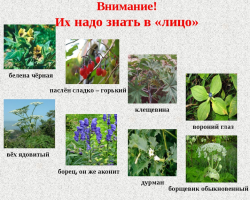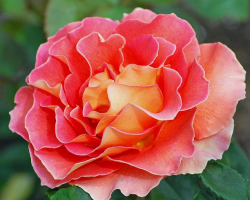In almost all personal plots, dill grows. Many summer residents are interested in how to delay the steming of this culture.
Content
Read more about this, as well as the features of growing dill, will be described in this article.
A brief characteristic of dill
- Dill belongs to grassy plants. He is characteristic a pleasant spicy aroma. The stems can reach a height of 40 cm to 150 cm. The surface of the stem is characterized by a dark green color, and has thin grooves. The leaves have an egg -shaped shape, and are divided into several parts. In the last row there are slices with a linear-triumphant or bristal appearance.
- Umbrellas can reach a diameter of 2 to 9 cm. They consist of yellow flowers. Subsequently, they are collected in umbrella inflorescences, the diameter of which is from 15 to 20 cm. The seeds have an ovoid shape. Often there are seeds of a broad -elliptical shape. Their length is about 5 mm, and the thickness is 3.5 mm. Culture begins to bloom in early summer. The fruits are Vysloplodniki. They begin to ripen during the end of summer to September.

Dill landing in open ground
- If you want a beautiful and fragrant dill in the garden, you need to carry out the correct landing. Failure to comply with the basic rules will lead to the fact that culture will not take root at all.
- Read more about the basic rules of landing will be described later.
Landing terms
- Sowing of dill seeds in open ground is carried out in early spring. Thanks to such terms, in the summer, your table will be aromatic and tasty greens.
- Most gardeners prefer to carry out the conveyor method of sowing. Seeds are carved with an interval of 2 weeks from March to August.
Preparation of the site
- If you plan to land springTake care of the choice of a site from autumn. Choose areas on which legumes, cabbage or cucumbers previously grew. Do not plant dill in the places where it had grown before parsley, carrots or Pasternak. Choose the places with which it grows garlic or potatoes.
- Before sowing seeds, you need to loosen the upper layer of soil, and make fertilizers. The best option is potassium salt (20 g per 1m 2) and urea (15 g per 1m 2). You can add 30 g of superphosphate for 1m 2.
Proper planting of dill seeds
- Before starting landing, the seeds should be prepared. To begin with, they are soaked for several hours in water. Better to change water every 1-1.5 hours, so that substances that will slow down the growth of culture be removed from the sowing material.
- After the seeds you need to soak in a weak solution of manganese. This procedure is called "disinfection." Next, the seeds are washed and dried in a natural way.
- Now you should form grooves, 2 cm deep. The distance between them is 15-20 cm. Sow the seeds in the grooves. Between the sowing material there should be a distance of 1-2 cm. After covering the beard, and pour them. To sprout the seeds, the air temperature should be +5 ° C. It is best to cover the site with agrofibre. The first shoots will appear within 1-2 weeks.
- If you want to sow seeds for seedlings, this is better to do in March. Planting is carried out in a greenhouse or in containers that will stand on the windowsill. A month later, you can plant seedlings in a permanent place. At the same time, there should be 2-3 pairs of real leaves on seedlings.
- Planting is best done on a cloudy, calm day. There should be a distance between the bushes 20-30 cm. Save the inter -row space the same. After planting seedlings, tighten the soil, and after carrying out mulching with dry soil. Remember that young plantings need to be protected from sunlight during the first 2-3 days. When color -bearing shoots are formed, remove them. This will accelerate the growth rate of lateral branches.
Dill care
- Dill is an unpretentious culture that is easy to grow in open ground. Care consists in feeding, watering, thinning and weeding. It should also be jerk the upper layer of soil to a depth of 5 cm so that the root system receives enough oxygen. Loosen is carried out after rooting of plants.
- In the future, the soil must be loosened with an interval of 2 weeks, especially after rain or irrigation. In such cases, loosening is carried out to a depth of 10 cm. It is a lot important to remove weeds, especially if the dill bushes are young. Read more about other care features further.

How to water dill?
- Water dill regularly, and often. Otherwise, the plant will lose taste, and also quickly yellow.
- If heat occurs in your region early, water the beds twice a day. If possible, install automatic watering. For every 1m 2 Pour at least 20 liters of water.
How to apply fertilizers for dill?
- Dill should be fed with substances, which include nitrogen. However, nitrates can accumulate in plants, so it is advisable to use nettle infusion, which wandered for 5 days. This method of processing not only saturates the plants with nitrogen, but also allows you to deal with aphids.
- You can also make potassium-phosphorus fertilizers. On 1m 2 Distribute at least 10 g of matter.
Features of the delay in stalking
- To remove the stalking of dillFirst you need to decide on the right variety. Keep in mind that the terms from the seedlings to the stalking period should be long. On average, this indicator should be month. However, there are varieties with a longer period - about 40 days. Such a variety is called Kharkov-85.
- If you are planning an artificial method to delay the stalking of dill, you need to gradually reduce daylight hours to 10 hours. To do this, you need to cover the bed with materials that will pass the air, however, the sun's rays will be detained.

Collection of dill seeds
- Когда семена укропа высохнут, и приобретут бурый оттенок, можно приступать к их department from the umbrella. Sowing material retains the germination of 3-4 years.
- After collecting the seeds, you need to decompose in a room that is well ventilated. After they dry, you can transfer them to the place where they will be stored. It is better if the room is dark, dry, and well ventilated.
Diseases and pests of dill
Like most agricultural crops, dill can be affected by diseases and pests. Read more about this, as well as about treatment methods, will be described in this article.
Common diseases
Often, dill is affected by such diseases:
- black leg. The root neck acquires a black shade, and also becomes soft. This leads to a fall in plants, and drying out. If the first symptoms are detected, the bushes must be treated with a solution of "Fundazole";
- powdery mildew. A white plaque forms on the surface of the bushes. To cope with the disease, you need to treat the plants with colloidal gray;
- false powdery mildew. Signs - chlorotic spots are formed on the bushes, which after acquiring a brown shade. The lower part of the spots becomes purple. The bushes need to be treated with copper chloride or burgundy liquid;
- currently. Inflorescences and shoots are covered with brown-yellow spots, the diameter of which is up to 6 mm. After the core becomes pale, and the edge of the dark brown. Copperenia should be treated with copper;
- rust. Buro-yellow spots form on the petioles and shoots of dill. Treatment consists in the use of Bordeaux fluid. Processing is carried out with an interval of 2 weeks.
Dill pests
The considered agricultural culture can be amazed at such pests:
- Carrot fly. The bushes slow down in development, and the leaves acquire a violet-scarlet shade. After they turn yellow and dry. To combat the fly, the processing of plants with karate zeon or vantex should be carried out.
- Umbrella blind. This pest sucks all the juice from the plant, which is why it dies. This leads to a decrease in productivity. It is recommended to process plants with a solution of actellik.
Common varieties of dill for growing
The choice of variety depends on the region of your residence. Early ripe, mid -season and late varieties of dill are found. More about the best of them will be described later.

Early ripe varieties
If you want to get an early crop, plant such varieties on the site:
- Gribovsky. It does not require special care, and gives a good harvest. Suitable for growing, both indoors and in open ground. Plant height - 25 cm.
- Further. This variety is ideal for culinary purposes. The sockets are formed 1-1.5 months after the appearance of seedlings. There is a small glossy shine on the bushes.
- Aurora. The ripening timing is about 1 month. The bushes have a powerful outlet and close -up internodes. Saturated green leaves contain a lot of juice.
- Umbrella. The ripening timing is about 30-40 days. More suitable for growing in a greenhouse.
Middle -worn varieties
There are varieties with average ripening periods.
Among them, they highlight:
- Ambrell. It is characterized by thick branches and long leaves. It matures after 50-60 days from the date of sowing.
- Borey. The sockets have a height of about 35 cm. The leaves are green, with a small blue coating. The ripening of the bushes occurs 2 months after sowing. Seeds ripen after 60-100 days.
- Kibrai. The peculiarity of the variety in resistance to powdery mildew. Culture ripens after 40-45 days from the date of sowing. Seeds ripen after 70 days.
- Alligator. Characterized by large leaves. Greens ripen after 40-45 days from the date of sowing.
Late -ripening varieties
Among popular late -ripening varieties, the following are distinguished:
- Salute. The height of the bushes reaches 1.5 m. The ripening is observed 45 days after sowing. Greens have a dark green tint with a blue tint. Umbrellas are formed slowly.
- Buyan. Characterized by resistance to disease. Suitable for growing through seedlings. The shoots remain soft for a long time, and on the foliage there is a raid of wax.
- Frost. Large umbrellas are formed on the bushes, and there is also an elevated socket. There are leaves with a strong dissection. There is a wax plaque on the sheet plates.
- Kutuzovsky. The ripening of the bushes is observed 45 days after the appearance of seedlings. The leaves have a green hue, and their length reaches 20 cm. A pronounced section is present on the sheet plates.
Now you know that there is nothing complicated in growing dill. You can delay the stalk of culture in several ways. The most optimal is to choose a quality variety. You can also cover the landing by reducing daylight hours.
Dill stalking: reviews
- Lydia, 53 years: For a long time, dill has grown in my garden. In the past few years, I have been trying to do everything to delay the steming of the bushes. I try to grow late -ripening varieties, because they harden more slowly.
- Tamara: 34 years old: Dill is my favorite type of greenery. On the advice of a friend, the Kharkovsky-85 variety landed on the site. Thanks to this, it was possible to delay the stalk of culture.
- Lyudmila, 48 years old: My mother was also engaged in growing dill. However, she could not delay the stalk of dill, so the greens were always cut off a few days after the appearance. However, after I was advised to reduce the daylight hours of culture, and I decided to try this method, the problem was solved.
We will also tell:
- Dill: benefits and harm to human health, nutritional value
- How to grow dill from seeds on a windowsill in an apartment
- Fenhel and Dill: This is the same
- Dill water for adults
- Dill water for newborn







